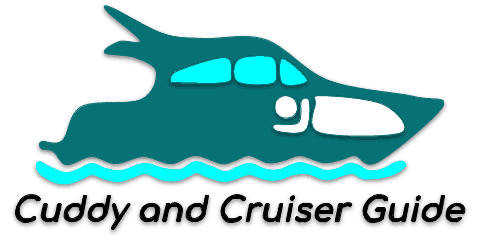When you’re rocking with the gentle waves out on the open water, the last creatures you probably expect to see are ants… lots of them.
It’s actually an all to common occurrence with boat owners and there are some tried and true methods to keep them at bay (no pun intended).
The most common ways to get rid of ants when they are on your boat is through the use of commercial or homemade borax-based pesticides, and vacuuming. Essential to preventing them from boarding your boat in the first place comes through cleanliness and using petroleum-based barriers on dock ropes.
So let’s dive into how to deal with these little critters and how to prevent them in the first place so that you can get back to enjoying your time on the water!
Dealing with Ants Already on the Boat
We’ll get into why the ants are on your boat in the second half of this article, but in the meantime we need to deal with the immediate problem of getting rid of these ants in the here and now.
Borax is going to be your best friend in this situation for the long-term fix, and you might find it pleasurable to use a handheld vacuum as well if you don’t want to simply watch the ants eat to the their death.
Borax disrupts the digestive system and kills the ants that come into contact with it but it generally does it slowly enough for them to also take some of the bounty back to the nest.

Most of the time you won’t actually have a nest onboard your boat. You’ve simply got dozens or hundreds of worker ants that boarded at one time or another. The queen is back on shore, and these ants are left forever wandering your vessel and searching for home.
So even though the ants encounter the borax, have their fill and walk away, rest assured that they will die even though they don’t have a nest to return to.
Let’s touch on the best commercial products and how to make your own!
Commercial Products
By far, the easiest method to simply purchase and implement is by using gel traps such as these seen here on Amazon. These have the gel suspended in a plastic container and are the least messy option. For use on a boat, I recommend using double sided tape on the bottom to keep them from moving around. Also, keep them away from any pets or children!
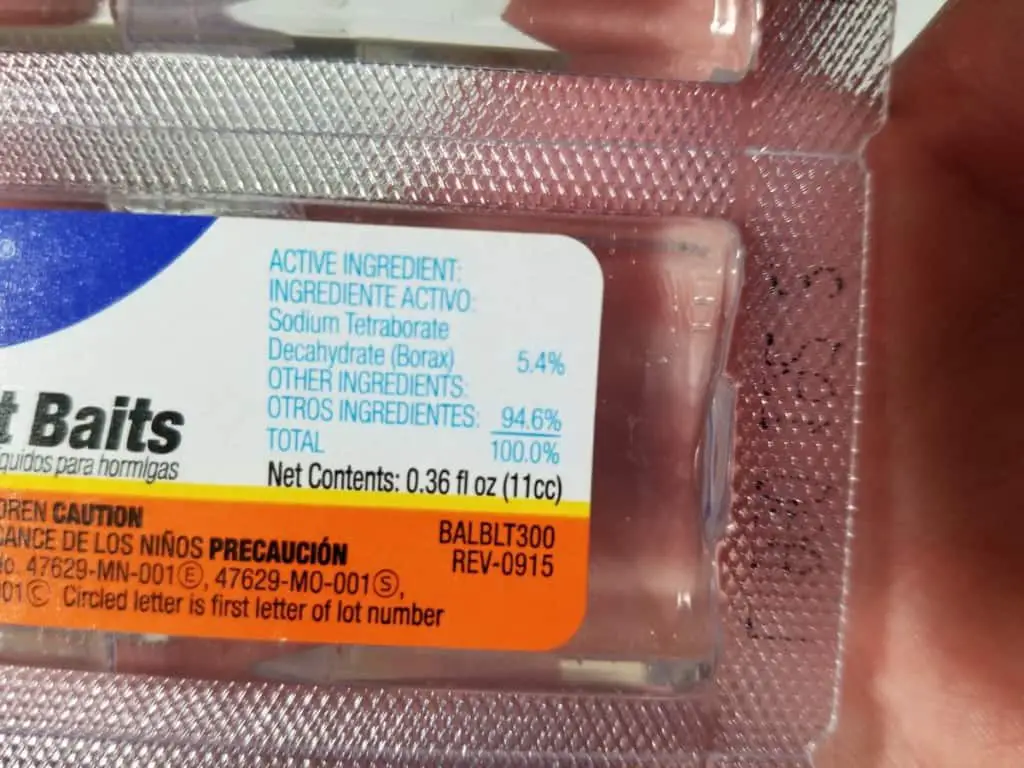
If you have pets or children on board, you definitely don’t want to use this option seen here on Amazon, but if it’s just you and your significant other, then this product does have the added advantage that it is not contained to a container. You can simply squirt a dab of the gel wherever you see the ants and into hard to reach or small crevices.
However, the gel without the container is messy, and you’ll want to make sure everything is cleaned up before inviting children or pets on board.
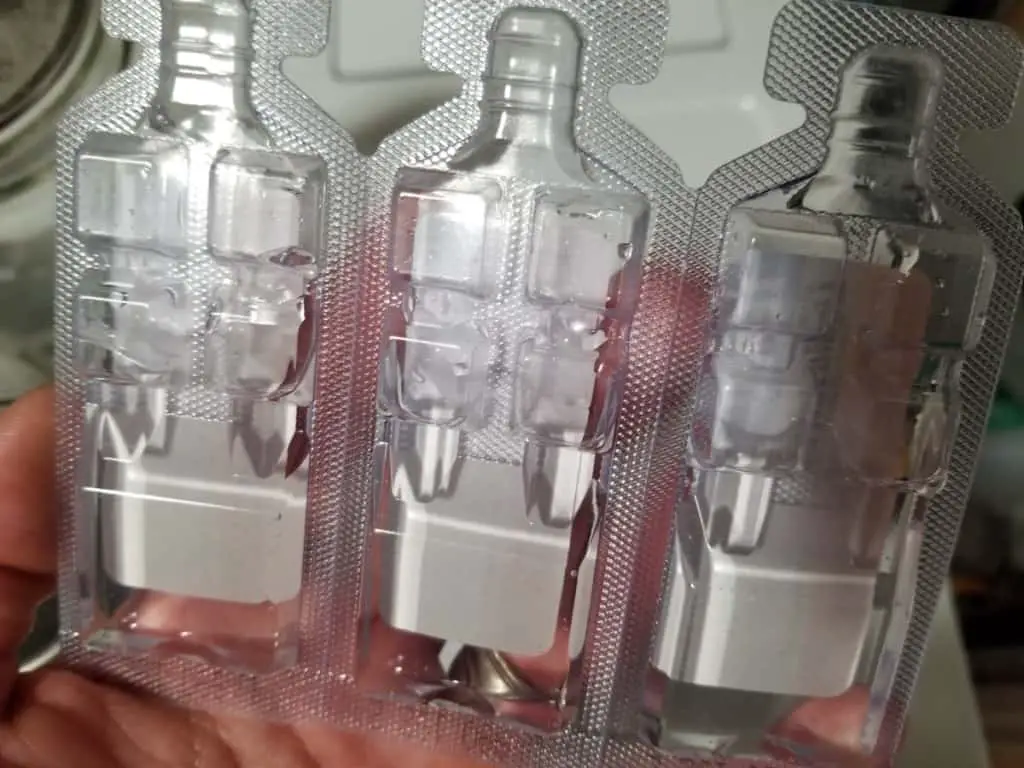
Having a handheld vacuum on board is a nice solution to quickly get a mass of ants removed in a hurry, but if you’re also setting traps you’ll want to be aware that agitating the ants with the vacuum can trigger the ants to release pheromones which will send the other ants into a panic. That’s the last thing you want if they’re already being lulled into your traps.
DIY Ant Control Remedies
This is where it gets fun! First of all, you’ll need to spend just a little money to get some borax like this seen on Amazon. After that, it’s kind of an experiment to see what exactly the ants are attracted to on your boat. If you see what they’re after, use that as the base in the blend.
Often times, ants will be attracted to sugar, or they will be attracted to fat and protein. The advantage of making your own traps is that you can make a few different types at once and hone in on what works best.
You can make the concoction in a liquid or a solid form. The choice is yours!
- Add borax and sugar to a cup with a ratio of 1:4 of Borax to Sugar (I prefer 1 tablespoon borax and 4 tablespoons of sugar)
- For a liquid mixture, add 1/4-1/2 cup of water to the mix and stir until fully disolved
- For a dry mixture, add a couple of tablespoons of water to make the powder into a chunky consistency like wet sand
- Place concoction in whatever container you’d like and use double sided tape on the bottom to secure it from moving with the waves (Empty whipped cream containers, old tupperware with a hole drilled in the top, ice breaker losenge containers with the lid cracked open, etc.)
- Ensure that there is an opening for the ants to enter and build them a ramp that leads up and back down into the liquid for faster results (Crack a stick in half on a 90 degree bend and use it as a triangle ramp)
- If sugar doesn’t work, you can substitute it with honey, mashed potatoes, peanut butter, splash in some beer, etc.)
My personal favorite setup is a taller one like a yogurt container that has a quarter-sized notch cut of the edge of the lid. Place the liquid solution inside so that it is about 1″ in depth. The tall container helps this from splashing out when on the boat.
Use double-sided tape and secure it down. Now, rig up a ramp that leads up and back down into the solution through the cutout notch.
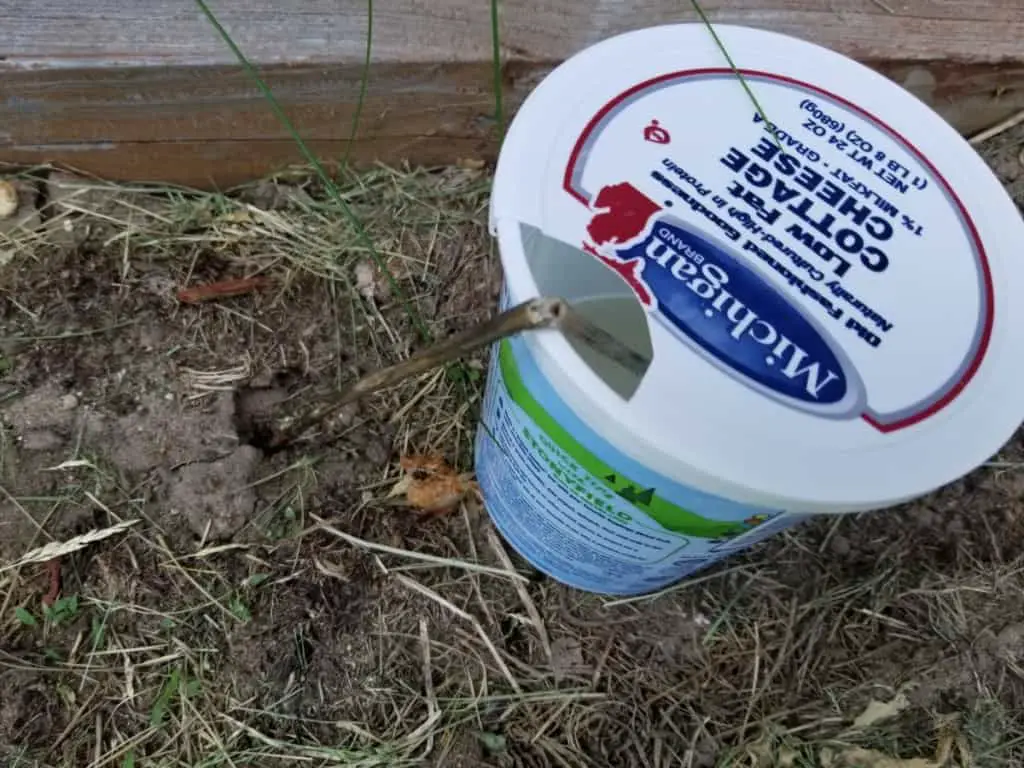
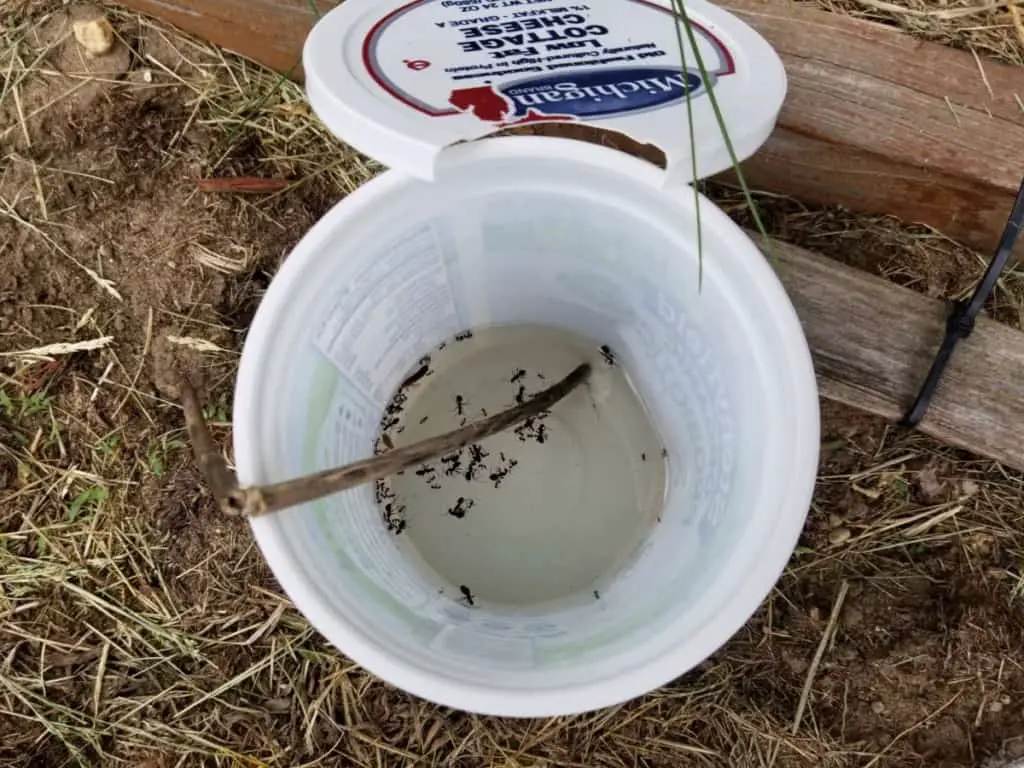
The final piece of the puzzle is to add a single drop of dish soap to the borax/sugar water. This will break the surface tension of the water. Instead of being able to walk on the water, eat, and retreat, many of the ants will be attracted to it, will start to drink and will slip down into the solution to drown quite easily.
Of course, some will make it out alive to die elsewhere, but you’ll catch a vast number of them simply by drowning.
Preventing Ants from Boarding Your Boat
If you just noticed the ants while adrift, it’s obvious that they didn’t just spontaneously emerge from the water. You picked up these freeloaders while you were docked, while your boat was in storage/at home, or while you were under some overhangs.
If you weren’t aware that ants can be all over the branches of certain trees then you would be really surprised. Often they’ll feed on the sugary waste secreted by other bugs on those branches, but if your boat is underneath, and you bump the branches, then you might be inviting these pesky insects into your boat via gravity.
Unless you bumped them from a branch, the ants are on your boat because there is something onboard that they were attracted to. You can either eliminate what they’re attracted to, or establish barriers to entry to keep them off your vessel.
Cleanliness
It is imperative that you keep food sealed up and stored properly. Crumbs must be taken care of, trash bags with food waste should be sealed up when not in use, and pet food should be sealed as well.
After consumption, thoroughly rinse out all of your soda and alcoholic containers before storing them in a bag. The amount of sugar and syrup left in them is a gold mine for hungry ants!
Barriers to Entry
If the ants are using your dock lines as a bridge onto your boat, then it’s time to put a stop to it. You’ll see advice to soak a rag in motor oil, wrap in around your lines, and zip tie it in place. I find this tedious and I don’t like that if it rains there will be an oil slick on the water.
A trick I’ve been using for years on my fruit trees to keep ants and other pests away is to simply take some old cloth/elastic headbands that form a circle and cake them in petroleum jelly. Make sure that the petroleum jelly has completely worked its way into the headband and saturated it.

Now, wrap it around your dock ropes (tree trunks in my case) like seen in the picture below, and ants will have no interest in climbing over the headband. I don’t know if it’s the sticky texture or if it messes with their pheromones, but they won’t cross it.

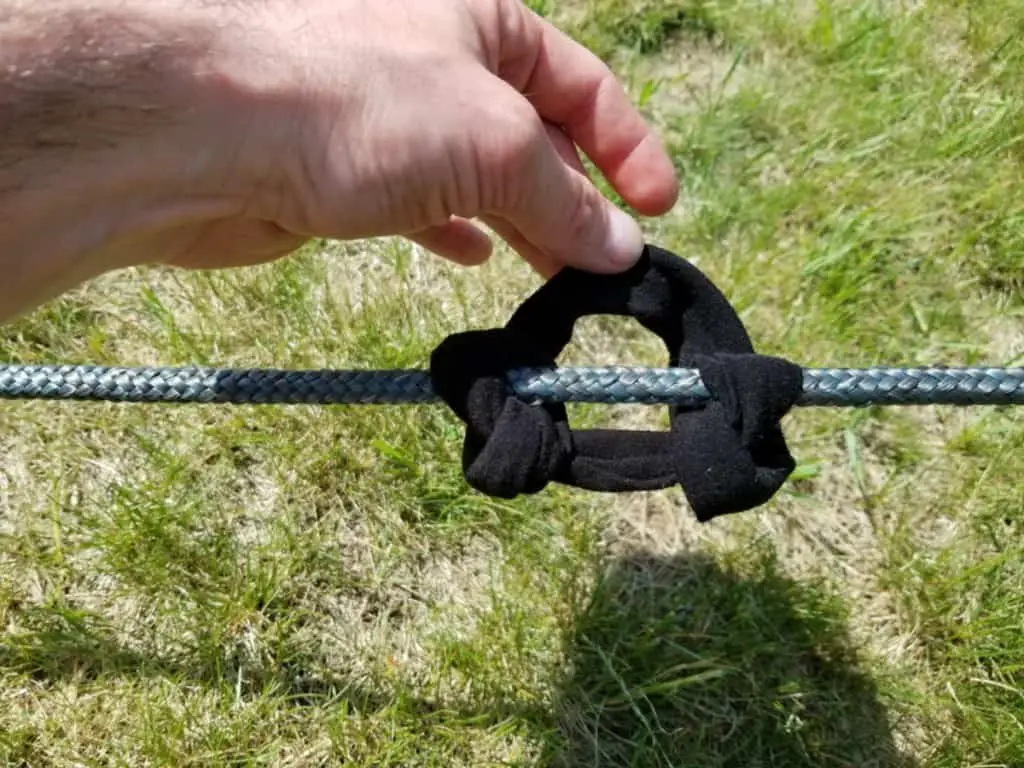

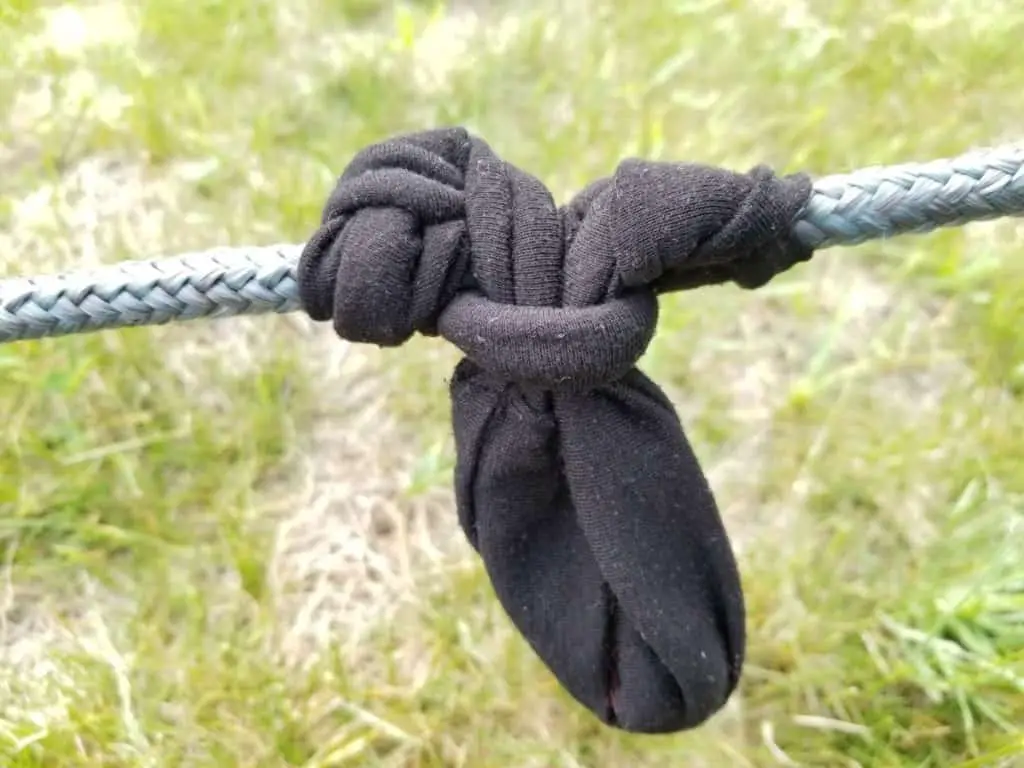
Also, if it rains, the petroleum jelly will remain on the headband.
If the ants are making their way aboard by using the rubber bumpers on the dock and climbing up the side wall of your boat, then there isn’t much you can do besides taking the steps mentioned above in the “cleanliness” section and vacuuming/setting traps.
